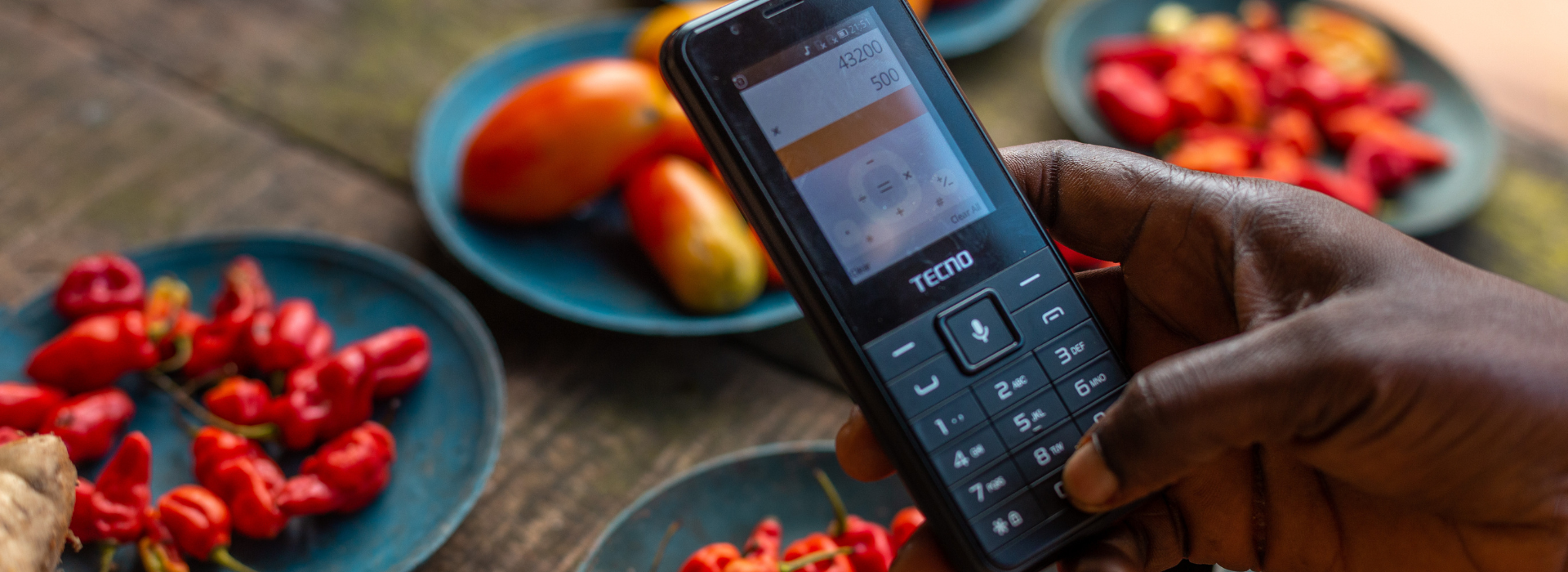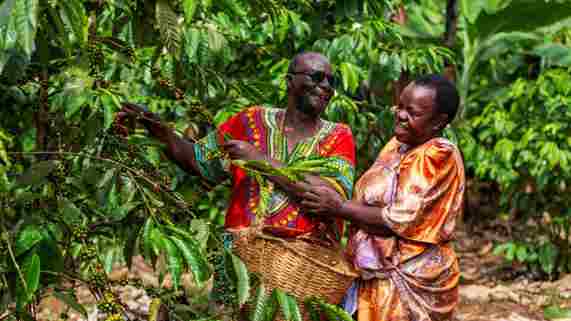Smart enough: How a low-cost phone can change the equation for millions of African entrepreneurs
October 29, 2024 | By Maggie Sieger
Carrying around your hard-won earnings in cash. Buying tomorrow’s goods with today’s profits. Being unable to qualify for financing to grow your business because you don’t have a credit score. These situations are the reality for far too many informal, micro, small and medium-sized business owners in emerging markets, where the digital divide between people who can connect to the internet and people who can’t is vast and growing.
Those without access to today’s digital world are losing out on opportunities for education and prosperity, not to mention economic stability. A partnership between Mastercard and KaiOS, a technology platform dedicated to advancing digital and financial inclusion, aims to close that gap and pave the way to a global economy that empowers everyone.
KaiOS, a veteran of Mastercard Start Path, the company’s startup engagement program, created an operating system for smart feature phones that allows users to access all the major apps without the hefty price tag of a smartphone. Mastercard, meanwhile, has been on a mission to connect more micro, small and medium-sized businesses to the digital economy — dreaming up what’s next based on what’s needed. In fact, the company made a commitment in 2020 to accelerate payment acceptance among these businesses, and recently met its goal of 50 million by 2025, a year ahead of its ambitions.

The new collaboration builds on that work, providing small businesses, starting in Cote d’Ivoire and Nigeria, with a low-cost digital payment acceptance solution gateway and offering a host of other digital financial tools and financial literacy applications.
The Mastercard Newsroom recently spoke with Sebastien Codeville, founder and CEO of KaiOS, which this fall was a runner-up for an International Telecommunication Union/United Nations award honoring organizations that use digital technologies to help achieve the U.N.’s Sustainable Development Goals. Here’s what he had to say about the challenges small businesses face in emerging markets and how the partnership can bring the promise of the digital economy to millions of entrepreneurs around the world.
Why are billions of people around the world still not connected to the internet?
Codeville: One is the affordability of the device. KaiOS research indicates that a consumer needs around $15 of daily disposable income to afford the cheapest smartphone, yet around half of the world’s population lives on less than $10 per day. Digital literacy is another challenge, People don't always understand the benefits, so they don’t see the value of buying a more expensive device.
Why is it important for small and medium-size businesses to have access to the internet and digital payments?
Codeville: Access to digital payments means access to financial services and financial tools. For example, a business owner transacting only in cash does not have a credit rating, which means they cannot access the financing needed to grow. There’s also the need for efficiency and safety. We see that the presence of high levels of cash goes together with a high degree of security issues.
How is KaiOS working to address these issues?
Codeville: Since 2016, our software platform has provided technology so that our partners can offer low-cost consumer devices to connect to the internet. But it became obvious during COVID that we had to provide more than just internet access. KaiOS is an operating system for what we call “smart feature phones,” which are the traditional keyboard phones but additionally provides access to the internet. With our partners, we've distributed more than 175 million phones that have all the features to make sure that the user gets access to everything, like apps, Wi-Fi, GPS — and now payments acceptance capability — on the devices, as well as being able to use the device as a phone.
What is KaiOS doing with Mastercard regarding digital payment acceptance?
Codeville: We are giving businesses a low-cost way to accept digital payments, plus other digital tools and services from Mastercard and financial service providers. The partnership is specifically focusing on the development of tap-and-go card contactless technology. Because KaiOS is a web-based operating system, additional services can easily be added to the merchant’s app solution. For example, you could add insurance and microfinancing capabilities as well as training modules.
How will having these digital capabilities help small businesses?
Codeville: Take Nigeria as an example. In Lagos, informal drivers transact only in cash, which creates security issues. Now, they will be able to collect digital payments instead, which is easier and safer for them. We also are working with a microfinance institution to digitize their merchants, meaning that the merchant gets a credit history and is able to receive financing to expand their business, increase revenue and develop the local economy.
How did you pick Cote d’Ivoire and Nigeria?
Codeville: We picked them mostly because they are different from each other. Nigeria is a market where a big part of the population is banked. In the Ivory Coast, a very small portion of payments are on cards. We want to make the solution as adaptable as possible to different market configurations. We’re already receiving a lot of interest from additional countries and fintechs. But we want to really focus on the first two markets and be successful there, then we’ll deploy globally.
Are you excited about this new payment acceptance product?
Codeville: It's very exciting, because the KaiOS mission is to help close the digital and financial divide. We believe digitizing payments is addressing a segment which today is not addressed at all. We see a lot of people trying different things, developing apps or developing services, but most of the time these apps and services are developed for smartphones. And the problem is the people we try to help do not have smartphones and cannot afford a smartphone. We believe our low-cost devices are in a sweet spot — and we can really offer something that will change people's lives.
